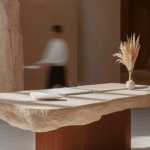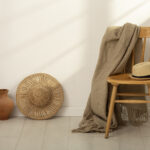“How to Choose the Right Furniture for Your Home”
Furnishing a home isn’t merely about filling empty spaces—it’s an intricate dance of style, function, and personality. Whether you’re stepping into your first apartment or revamping a long-lived-in house, selecting the appropriate pieces can elevate not just aesthetics but the way you live. But how do you strike that balance between design and practicality, timelessness and trend, comfort and creativity? Let’s break down what it really takes to make the right choices when it comes to furnishing your space—without the noise or overwhelm. Begin With a Clear Vision Before stepping foot into a showroom or clicking “add to cart,” envision the atmosphere you wish to cultivate. Are you drawn to minimalism, where open spaces and muted tones prevail? Or do you lean towards a cozy, eclectic vibe filled with character and layered textures? This vision doesn’t have to be rigid—it’s more of a compass. Once you establish a general mood, it becomes far easier to eliminate distractions and focus on items that align with your intent. Space Speaks—Listen Closely Each room in your home has its own rhythm. A narrow hallway doesn’t need a statement console, just as a spacious lounge can handle a generous sectional. Consider scale and proportion over impulse. Try taping outlines of potential furniture on your floor to get a spatial sense. This helps you understand not only the fit but also the flow—how people will move through the room and interact with the space. It’s not just about how furniture looks but how it lives with you. Quality Over Quantity, Always A trap many fall into is the rush to fill up a room. Resist. Great interiors evolve. It’s better to live with less for a while than to accumulate pieces that don’t serve or satisfy. Opt for craftsmanship and materials that endure. Solid woods, genuine leather, durable fabrics—these not only last longer but age gracefully. Remember, one well-chosen chair can do more for a room than five forgettable ones. Harmonize Without Being Predictable Matching sets? They’re easy—but they often lack soul. Instead, aim for a curated cohesion. Think complementary tones, varying textures, and unexpected pairings. A velvet lounge next to a rattan armchair? Why not. It’s in these contrasts that a home gains depth. But always maintain a thread—be it a color palette, shape language, or era inspiration—that ties everything together subtly. Functionality Is the New Luxury Aesthetics matter, but practicality holds the throne. Hidden storage in a coffee table, an extendable dining unit, modular shelving—these features silently enhance your day-to-day life. This is especially vital in urban spaces where every square inch counts. Choose furniture that serves multiple purposes without shouting about it. The most satisfying designs often do their job quietly. Trust the Tug of Intuition Yes, trends are everywhere, but not all of them are meant for you. Just because boucle is hot this season doesn’t mean it belongs in your den. If something draws you in—be it a color, texture, or silhouette—pause and consider why. When it feels right, not because it’s in but because it resonates, that’s when you know you’re on the right path. And that’s often when you stumble across gems in the most unexpected corners—sometimes even at the best furniture store you hadn’t yet heard of. Consider Your Home’s Architecture The structure around your furniture tells half the story. High ceilings demand pieces with presence, while exposed beams or ornate trims may pair better with more understated choices. Let the existing elements guide your decisions. Ignoring architecture is like trying to whisper in a room full of loud music—it just won’t land. Stay Open to Layers A home isn’t finished the day the movers leave. It matures as you live in it. Allow your furniture to evolve alongside you. Add a side table you found while traveling. Swap out dining chairs over time. Layer lighting, rugs, and personal accents slowly. In time, your home will reflect not a catalog, but a life richly lived. Final Thoughts Selecting the right furniture is part strategy, part instinct, and part patience. It’s not about mimicking a magazine spread but crafting an environment that nurtures how you truly live. And if you’re navigating the delightful chaos of setting up a modern furniture for new home, remember—every choice doesn’t need to be perfect, just purposeful. Because when done right, you won’t just see the difference—you’ll feel it, every day.



